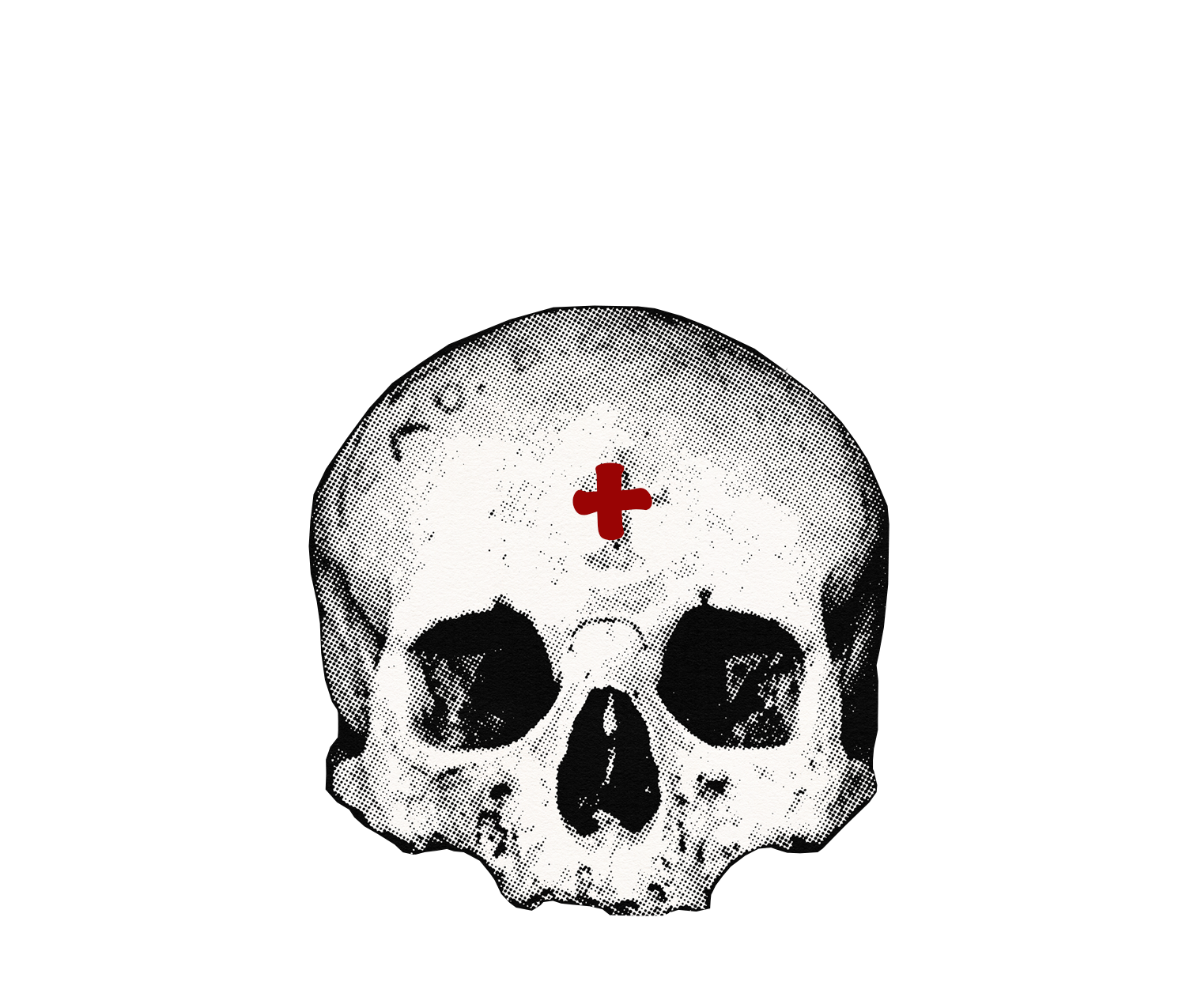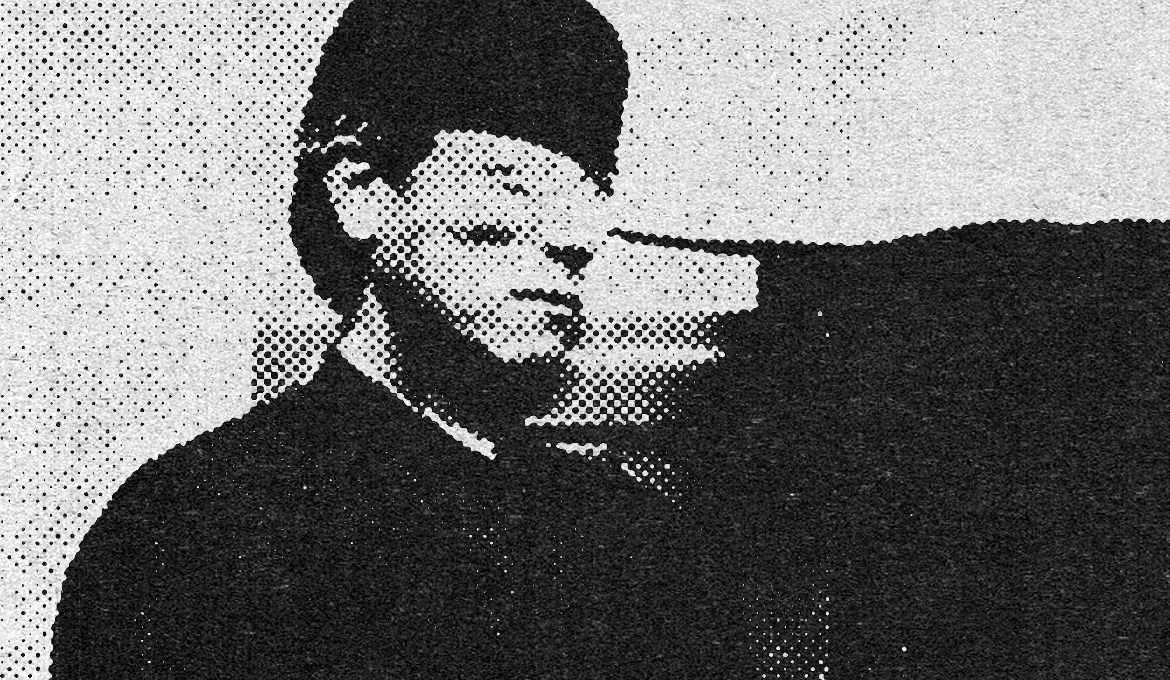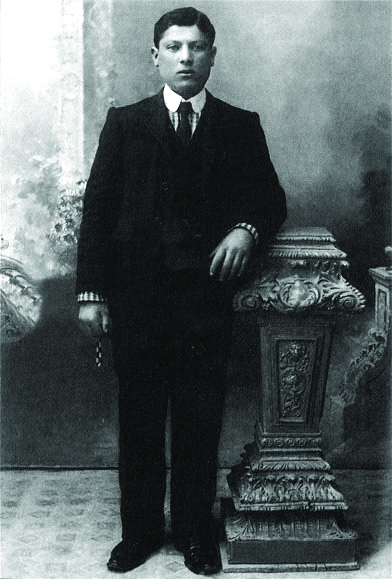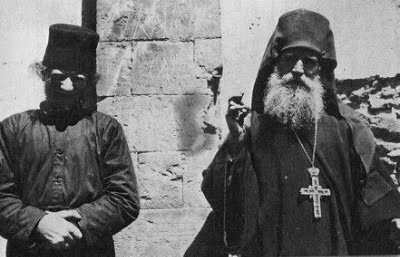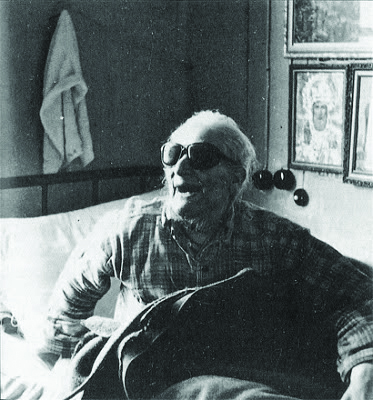On the island of Crete there is a village called Sirikari, known for its healthy chestnut forests and gorgeous, serene caves. The Sirikarian villagers famously celebrate the Dormition of the Panagia on August fifteenth and each of their eleven neighborhoods encompass at least one of Christ’s churches. No less than three churches adorn the streets of the Kostogiannides neighborhood where the reverent Tzanakakis family lived.
It was here that John and Glykeria Tzanakakis raised their children to live simply and piously “in the teachings and shelter of the church,” as the monk Simon notes in his biography Saint Nikiphoros: The Leper & Wonderworker (2016). “Hatzina” Glykeria was renowned in the community for her zeal, having been an avid pilgrim. Her title, “Hatzina,” tells us that she was baptized in the Jordan River.
Among their many children was a handsome young man named Nicholas. Born in 1890, he and his siblings would be burdened with the loss of both parents, a tragedy that would mar their young lives. Endeavoring to raise up little Nicholas from his despondency, Grandfather John took his young grandson to Khania to learn a trade. Nicholas had no way of knowing he would never see his home or family again, for during his apprenticeship in a barbershop Nicholas’ burden increased.
Upon thirteen year-old Nicholas’ skin appeared a mark in the center of a tell-tale ring, the promise of leprosy. Now, not only did he have to carry the grief of losing his parents but also the secret that would condemn him to the island of Spinalonga. Known as “the island of the living dead,” Spinalonga was home to lepers exiled from their homes, for in this time the highly contagious disease had no cure. Sufferers were left to rot in solitude without love or compassion from their families and neighbors. Simon the Monk writes that this disease would be the seal of young Nicholas’ martyrdom.
Despite his family tragedy, Nicholas had been a joyful child and he strove to continue in this way as a means to keep his cross a secret. For three years he managed to conceal the disease as it spread throughout his body but, each day the anxiety of its discovery further tormented his soul. In the year 1906, he could keep his secret no longer and fled to Egypt, finding work in an Alexandrian barbershop. His joyful spirit brought him the admiration of the Greek community, and his devotion to Christ amongst the pagans brought him the esteem of the local clergy. He desired to visit the Holy Sites of Christendom as his mother had before him and in this way, he brought more and more attention to himself from the Christians of the area. With this attention came the growing fear that once again he would have to flee. No one was exempt from exile if they be a leper, and Nicholas feared he would be cast out of Alexandria and driven to the island of the dead. Through the grace of God, Nicholas confided to a bishop of his affliction and having understanding and love for the child, the priest arranged for his spiritual son to be received by the now venerated saint, Father Anthimos Vayianos, who presided over the leper community on the island Chios.
For the third time Nicholas left those he loved to embark towards the unknown. He was twenty-four when Father Anthimos greeted him on the Chioan shore. Unbeknownst to Nicholas, the costly sum of his admittance to the community was thirty gold coins. The future saint, Father Anthimos, had painstakingly saved that same amount to go towards a new monastery. Alas, the saint sacrificed gladly so that Nicholas could be received amongst the lepers.
Remarkably, in only two short years Nicholas’ maturity and devotion found him worthy of receiving the holy Angelic Schema. He was tonsured a monk and given the name Nikiphoros, which means “bringer of victory.” Leprosy continued to ravage his body, disfiguring his skin and deforming his hands. Yet the disease was no longer a source of despair but a spiritual tool to bring him closer to Christ.
He was ever obedient to his superiors and grew increasingly humble. Simon the Monk discovered in his research that Father Nikiphoros even requested a daily blessing of his master before tasting water. Despite his spiritual ascension he was ever mindful of his sins, instructing his spiritual children to always confess their shortcomings in prayer.
As the disease stole his sight, a new spiritual vision took over. His brethren marveled as the blind monk consistently knew who was at his cell before they even announced themselves. The loss of his eyesight did not disrupt his liturgical duties, for the future saint knew the hymns and scriptures in his heart. In 1957 Father Nikiphoros and the remaining inhabitants of the Chioan community were sent to the Leprosy Treatment Center of Saint Barbara in Athens.
From Simon the Monk’s biography:
“The Athonite monk, Father Gervasios of blessed memory (†November 2000), from the Holy Monastery of Simonopetra, recalled: “Around 1960, I went with a group of fellow students to visit Saint Barbara’s Hospital for Infectious Diseases in Aegaleo. At that time, very few people would visit the Leprosy Treatment Center. We found there a very sweet, venerable elder, Father Nikiphoros—a grace-filled, God-bearing and virtuous man. After we took his blessing and sat down, he asked us, ‘My children, do you pray? And how do you pray?’ We told him that we pray with some spontaneous prayers, as we learned at gatherings we attended. He said to us, “Not that way. Pray with the Jesus prayer, “Lord Jesus Christ, have mercy on me.” This is how you should pray. This is the right way.’ And slowly, little by little, he taught us the Jesus prayer.” Father Gervasios concluded, “We went to visit the lepers in order to console them, and they taught us how to pray.”
After fifty years the disease had left Father Nikiphoros immobile. His fellow monks and spiritual children fed and bathed him and grew increasingly aware of his spiritual abilities. One monk, his disciple Evmenios, upon taking a midnight peak into Father Nikiphoros’ cell, saw the awesome sight of his elder suspended in the air, surrounded by heavenly light, in prayer. The next morning he admitted this trespass of peeking into his elder’s cell to Father Nikiphoros. The old monk happily forgave him but urged that this miracle be kept a secret while Father Nikiphoros still lived.
On January 4, 1964, the Eve of Theophany, Father Nikiphoros reposed in the Lord. His funeral was held the following day, and all those in attendance were aware that they were burying a saint. According to his wishes, Father Nikiphoros’ relics were exhumed three years later and entrusted to Father Evmenios, his spiritual child. In December 2012 the Holy Synod of the Ecumenical Patriarchate officially numbered Father Nikiphoros among the canonized Saints of the Orthodox Church. Four years later, the publication of Simon the Monk’s biography brought a once obscure Saint to the attention of the Orthodox world. Many have given testimony to the miracles that have occurred when calling upon the help of Saint Nikiphoros. Several readers—usually women and children—have been astonished by the heavenly fragrance that mystically appears to emit from the illustrations of the various icons of Saint Nikiphoros reproduced within its pages.
By Lazarus Hawkins
Recent Miracles
The Young Girl and the ‘Mytsery Saint’
I was asked to give a talk at the winter session of Camp St Nicholas, a camp of the Antiochian Archdiocese. This camp is for teenagers, and the talks were supposed to revolve around the topic of suffering. I began to prepare for this talk just after visiting Life Giving Spring Monastery for the first time in November 2018, and St Nikiphoros the Leper had just been introduced to me. I wanted the teens to have an example of a saint who suffered in a Christlike manner, so I was inclined to introduce them to St Nikiphoros as well. However, as time went on I began to think to myself that perhaps it would be better to give them an example of a more “popular saint” and second guessed including St Nikiphoros in my presentation.
A week before the presentation, I went with some parishioners to Life Giving Spring Bookstore in Glendale, California, and they both bought the life of St Nikiphoros. I inquired to get the book as well, but there were no more copies on the shelf. The owner did not think she had any more copies, but when I was somewhere else in the store, I found one copy of the saint’s life alone and out of place. I bought the book, seeing this as a sign that I needed to talk to the teens about this saint. Nikiphoros wanted to be known, but I would’ve never guessed what unfolded the night I gave the presentation.
I presented the life of St Nikiphoros on the last night of the teen camp, giving a slideshow about his life with pictures of him and icons of him. As the talk ended, a seventeen-year-old girl approached me and said:
“Father, I don’t want this to sound weird or anything, but I know this saint.”
Thinking she had maybe heard of St Nikiphoros before, I said, “Oh really?”
The girl responded, “Yes. He appears to me in my dreams. Is this normal?”
I was certainly taken aback, but just having read the miracles included in the saint’s biography, I said to her, “It seems it is normal to Nikiphoros!”
The girl then said to me, “I have never told anyone this before, except my mom. I was diagnosed with a severe auto-immune deficiency at age 13 [unknown to her this is the same age Nikiphoros found his leprosy] and have been praying for healing ever since. At night I have a reoccurring dream that I am standing in my icon corner praying and I look to my right and there is an icon of a monk in my dream that is not on my wall in reality. I have been praying to this unknown monk because he gives me comfort. But in my dream, I cannot read his name. When you showed the last slide with his icon, I just began crying… because it is him!”
This girl had known St Nikiphoros for four years, but never knew his life or what his name was, and I was able to witness him introduce himself to this young “patient” of his! Lord have mercy on me! It was such a beautiful thing—her joy, her tears, the real connection with a saint. The icon that happened to be in her dreams is the same icon that is printed on the front of the book, so I gave her my copy so that she could better know her protector and friend. That night, she stayed up reading his life and miracles to all the teenage girls in her cabin.
Wondrous is God in His Saints!
COVID-19 Appearances
In the beginning of the COVID-19 outbreak, it was documented that St Nikiporos appeared twice to comfort the faithful and urge them to pray to him. If you become sick with the virus, “I will take care of it,” said the saint. The first appearance was to a military officer in Greece and the second was through a succession of dreams in Bulgaria. Through this, the saint sent comfort to many of the faithful and hope to the world.
